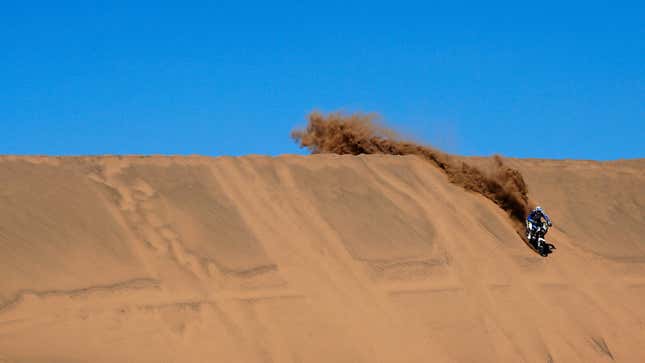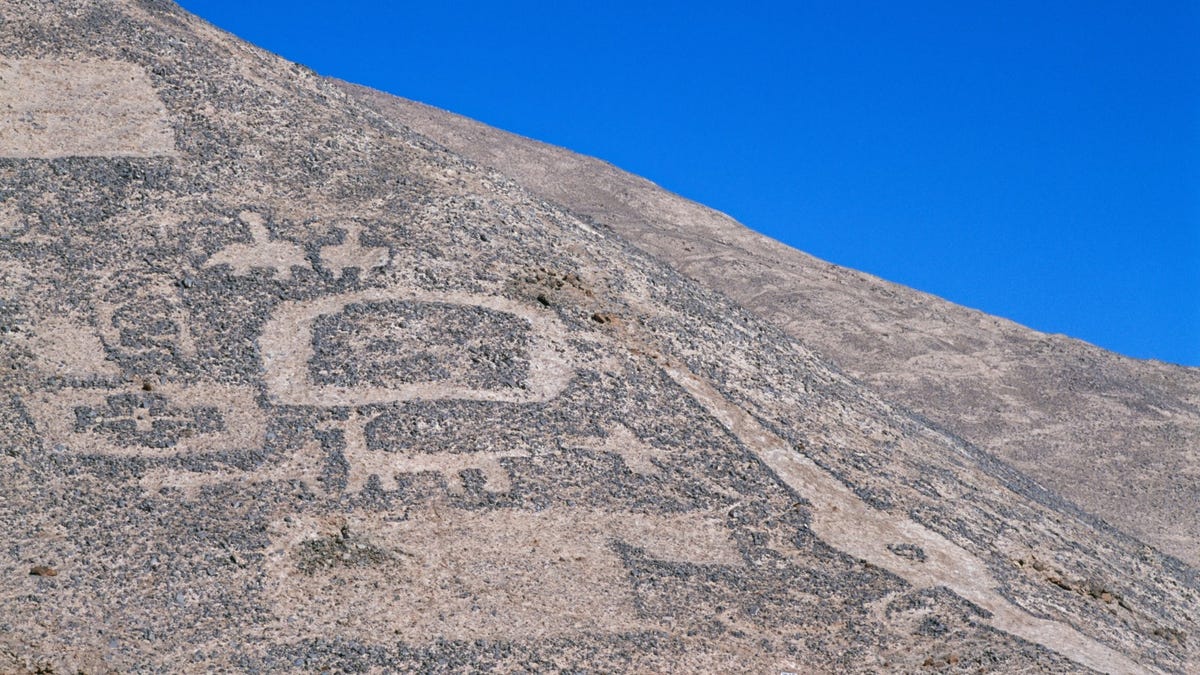Off-roading is a pretty great pastime that brings people together, is a fun way to explore the outdoors and showcases some incredible automotive engineering. However, its impact on the natural world shouldn’t be underestimated and now off-road racers have been linked to the destruction of centuries old art in the Atacama Desert.
A collection of ancient artwork carved into the floor of the Atacama Desert has been damaged by tire tracks. The tracks come from cars and bikes racing across the desert floor, but in the process they’ve torn through 3,000-year-old artworks depicting animals like horses and birds.
However, while you might expect that the damage was done by hooligans breaking the countryside code and driving wherever they want, a New York Times investigation has found that fully-legal off-road races have also been permitted to run through the artworks.
Lawmakers in Chile have previously approved routes that take racers perilously close to the ancient carvings and, while the works are mapped out ahead of the events, little is done to check that racers stick to the correct lines. As the site explains:
Organizers of one large race, the Atacama Rally, denied any responsibility for the damage to Alto Barranco, which they had last raced near in 2022. Gerardo Fontaine, director of the Atacama Rally, said that all participants knew their route, were tracked by GPS and were alerted if they went off course. He added that the race organizers set the routes, which were then approved by the regional authorities.
“The real issue is with drivers who ride rented motorcycles in the desert without permission,” he said. “No one says anything to them.”
Daniel Quinteros Rojas, a regional official, approved the 2022 rally on the condition that the racers stick to pre-established roads. But he said the rally organizers did not turn over GPS tracks followed by the drivers after the race, so officials could not determine whether the drivers caused could be linked to any observed damage, Mr. Quintero Rojas said.
“We found an institutional weakness in our ability to monitor and address these impacts,” he said. For that reason, he added, no rallies have since been approved in Tarapacá.
One of those big weaknesses is that regulators very rarely check GPS tracking for competitors in the event. In fact, one archaeologist that the Times spoke with said they had filed a complaint with authorities in the region that claimed the rally’s route overlapped with archaeological sites.
As part of the complaint, they compiled photos of racers passing near the legally protected areas. While nobody has been penalized as a result of the claim, the Atacama Rally relocated for subsequent events.

If racers were to be penalized for driving over the ruins, they would face fines of up to $14,500 in Chile. However, campaigners have been eager to point out that identifying people caught driving through the works is easier said than done, as the Times explains:
Currently, those who damage archaeological sites in Chile can face more than five years in prison and fines equivalent to over $14,500, according to the Ministry of National Assets. But José Barraza, the director of cultural heritage for the Tarapacá region, said that in many cases, complaints were dismissed or investigation files were left open because of lack of evidence, as catching someone in the act is a challenge in the vastness of the desert.
“There are no license plates, no faces,” Mr. Barraza said.
This doesn’t mean that protection of the works is a lost cause. Instead, the Times reports that the government in Chile has convened a panel of experts to develop strategies to highlight the artworks’ importance among rally racers and put in place a system to protect the undamaged geoglyphs and archaeological areas.


